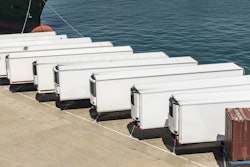By John Blodgett, MacKay & Company
I have been in outside sales most of my life — primarily because I am not office broken. I need to be let out a lot if I am in the office.
I have almost always enjoyed being on the road, meeting new people, going to different and new accounts and providing solutions to customers’ needs. It takes a certain personality to be successful in an outside sales position. It takes someone with enough responsibility to use his time wisely, follow up on what he says he will do, have good sales skills and a personality (preferably good, maybe bad, but you have to have one; I have several).
You also need to have good products. In our industry we have good products. Competition has chased out the worst products and those that have bad products don’t last long.
If you’re good at outside sales, the independence and financial benefits can be very satisfying. Most outside salespeople have processes and tools to assist them in achieving success.
At MacKay & Company, we provide a number of our clients with tools to identify and size aftermarket parts and service opportunities within markets or territories. We don’t complete this type of analysis for everyone in the industry (but I am working on it). Many companies have their own systems they provide to their salespeople, but many don’t.
There are a number of things you can do to help make yourself or your outside salespeople more efficient and ultimately more successful.
Start with the customer data you have on your current and past customers. What do they buy? How often? What type of products? What don’t they buy from you?
Start building a profile of the fleets in your market or territory. Begin with customer data, but the best next step is profiling your customers. Know how many trucks, trailers, makes, models, ages, average annual miles and what type of applications (refuse, construction, for hire carrier, etc.) because different applications drive different parts demand. Who are the decision makers? Are decisions made at this location?
How do you get this information? Just ask. They may not provide it, but you won’t know until you ask. Explain you want to be a good resource to them and this information will help you do that and most will provide it. Set a goal of profiling a certain number of fleets a week and don’t skip your best customers because you think you know them — you will be surprised by what you learn and what you are missing.
Beat the bushes and take roads you don’t normally travel; businesses are not required to let you know they exist. An old salesman I met in one of my first jobs called it smoke stacking (as in look for the smoke stacks, that’s likely where there is opportunity). Visit companies you have not in a while — maybe for good reason; bad credit, bad people — but things may have changed.
Start roughly estimating opportunities at these fleets across a few products. For example, a fleet has 10 trucks that run 75,000 miles a year. They replace lube oil filters every 15,000 miles, so roughly 50 filters a year. Use your market knowledge and insights from other fleets (or ask them) to help estimate the opportunity at each fleet. Use the same rough estimate process on each fleet.
Opportunity is one thing, but if very little is purchased or decided locally, that needs to be figured into the equation. Keep this data current as fleet profiles change. Most fleets don’t open their doors with 2,000 power units.
At the end of the day, you want to use this customer data to help you prioritize and strategize where you spend your time so your company and you can be successful.
John Blodgett has worked for MacKay & Company for more than 20 years and is currently vice president of sales and marketing, responsible for client contact for single- and multi-client projects. He can be reached at [email protected].











